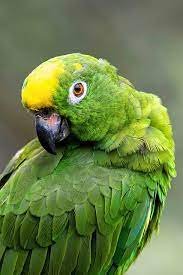RE: Winners Of Show Me A Photo Contest Round 218 in Feathered Friends Community
You are viewing a single comment's thread:

In Ecuador, there are several species of parrots, but two stand out for their importance. The Celestial Parrot (Forpus coelestis), also known as the Celestial Parrot or Emerald Parrot, is common in the west of the country, from the Chone River region to northwestern Peru. Measuring between 11 and 13 cm, it has bright green plumage that camouflages it among the foliage and displays marked sexual dimorphism: males have blue tones on their wings, while females are more uniform. They live in varied habitats, from semi-arid lowlands to tropical rainforests, and feed on seeds, berries, and cactus fruits. They often form small groups of up to ten individuals outside the breeding season, and in captivity are popular for their ability to breed in small spaces, such as cages measuring 120 x 40 x 50 cm.
Another species is the Ecuadorian Parrot (Hapalopsittaca pyrrhops), also known as the Red-faced Parrot, which lives in the high Andean forests of southern Ecuador and northern Peru, between 2,400 and 3,500 meters above sea level. This parrot, about 23 cm long, is rare and classified as Vulnerable by the IUCN, with an estimated population of 2,500 to 9,999 mature individuals. It has a bright red face with blue and yellow patches, green and blue wings, and a red shoulder. They are usually seen in pairs or small flocks of 4 to 6, feeding on shoots, flowers, berries, and seeds in the forest canopy. They nest in tree cavities between October and January, but their habitat is threatened, putting their survival at risk.
Ecuador, a megadiverse country, offers a home to these birds, but also faces challenges. In places like Guayaquil and Cuenca, illegal trafficking of parrots is a problem. In 2016, the Ministry of the Environment and the Environmental Police seized parrots in markets like El Arenal, where “love parrots” were being sold for $12 each, often imported from Santo Domingo. These birds suffer during transport—many die or develop problems such as vitamin deficiency and self-harm from stress. Experts like ornithologist Carola Bohórquez have noted that of every 100 birds captured, only 10 survive due to hunting methods, which include cutting down the trees where they nest. This reminds me of how in the 1960s we advocated for harmony with nature, an ideal that today seems more urgent than ever.
